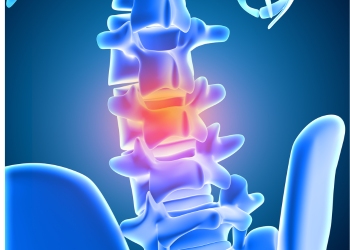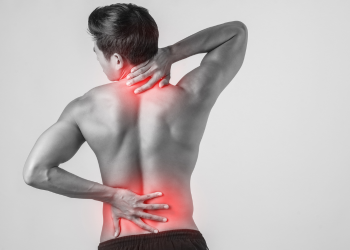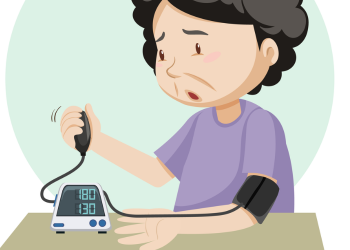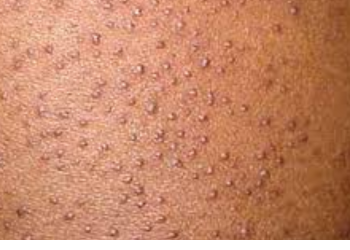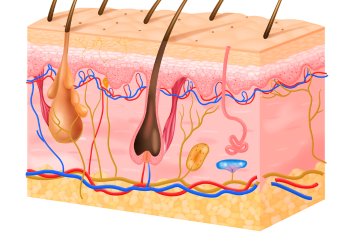
Appendicitis is an
inflamed appendix. It can cause acute (sudden, intense) pain in your lower abdomen. The appendix
is a small, tubular pouch, about the size of a finger, that protrudes from the
lower right end of your large intestine.
Appendicitis is almost
always an acute condition, which means it begins suddenly and worsens quickly.
Most of what we know about appendicitis refers to acute appendicitis, which is
very common. Chronic appendicitis is a rare condition that we don’t know as
much about. It appears to occur when something irritates your appendix in an
on-and-off sort of way over a long period, but it never gets worse.
Chronic appendicitis may
go unrecognized because the symptoms don’t escalate the way they do in acute
appendicitis. Chronic appendicitis may worsen or become acute at any time.
In early, recurrent,
or sub-acute cases of appendicitis, choose homeopathy as a complementary
therapy. Homeopathic care aims to support the body’s natural healing and calm
discomfort, using individualized remedies tailored to the person’s specific
symptoms. Homeopathy is seen as a supportive approach aimed at easing
discomfort and promoting balance.
Symptoms and Causes
The most common symptoms
of appendicitis are abdominal pain, nausea and loss of appetite.
Abdominal pain begins in
the middle of your abdomen, around your belly button. It may hover or may come
and go for several hours.
Nausea and vomiting
Pain shifts to your lower
right abdomen, where your appendix is. The pain becomes more focused and
continues to worsen.
Fever. Up to 40% of people develop a
fever. This means your immune system is kicking into a
higher gear. It may also mean that inflammation is increasing.
Malaise.
Swollen belly.
The abdomen may look distended or feel bloated. This is usually an advanced
symptom and may indicate your appendix has ruptured.
Urinary
symptoms. Feel like you have to pee more often or more urgently. This can
happen if appendicitis irritates nerves connected to your bladder.
Bowel paralysis. When body redirects blood
flow from your bowels to your appendix, bowels can temporarily stop moving.
Diarrhea.
McBurney’s
sign. McBurney’s point is the most typical location of the appendix, and
tenderness there is the first thing healthcare providers check for in a
physical exam. They find it by drawing a line from your ASIS (a bony projection
near your hip) to your belly button and measuring the distance. The point is
about two inches along the line, or one-third of the distance.
Blumberg’s
sign. Pressure applied to the sore area feels worse when it’s released (also
known as rebound tenderness).
Dunphy’s sign.
Coughing makes the pain worse.
Rovsing’s sign.
Pressure on your lower left side produces pain on your lower right side.
Psoas sign. If
the appendix is behind the colon rather than in front, appendicitis might
irritate the psoas muscle. Might find yourself flexing your right hip to
shorten the muscle, which relieves pain. A healthcare provider might try
extending your right hip or rotating it outward. If this hurts, it’s called the
psoas sign. If rotating it inward hurts, it’s called the obturator sign.
Differential diagnosis
Pelvic inflammatory disease.
Endometriosis.
Ovarian cyst.
Kidney stone.
Urinary tract infection.
Pancreatitis.
Inflammatory bowel disease.
Diverticulitis of the colon.
Gastroenteritis.
Intestinal obstruction.
Causes
Lymphoid
hyperplasia
Colitis. Inflammation in the colon
Tumors.
Parasites.
Cystic fibrosis.
COMPLICATIONS
Ischemia and
necrosis.
Gangrene/perforation.
Abscess/phlegmon.
Peritonitis
and spreading infection.
Diagnosis and Tests
Blood tests can show signs
of inflammation, such as a high white blood cell count or C-reactive protein count, and they can
help identify an infection.
Imaging tests, such as
an abdominal ultrasound or a CT scan, can show if the appendix is
swollen.
Management and Treatment
Appendectomy is one of the most common surgical
procedures performed worldwide. Surgeons can often perform it using minimally
invasive methods, such as laparoscopic surgery.
Homeopathic medicine for appendicitis pain
Belladonna
Colocynthis
Iris versicolor






